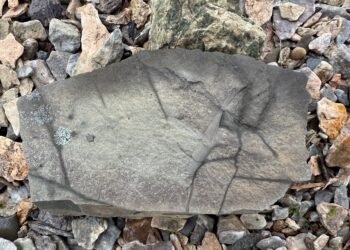Embark on a journey to the Pyramid of Djoser, Egypt’s oldest pyramid and a UNESCO World Heritage site within the ancient necropolis of Saqqara. Join me as I uncover the history, science, and mysteries of this remarkable structure, from Imhotep’s architectural genius to the geological forces that have preserved it through the ages. Discover practical tips for visiting and insights for the science traveler, all through the lens of personal exploration and curiosity.
1 Arrival in Egypt and Journey to Saqqara
After a few days exploring Athens, I found myself on a flight to Cairo, my gateway to Egypt’s ancient wonders. Arriving in the heart of Cairo near Tahrir Square, I was greeted by a blend of the modern and the historic, with narrow streets brimming with life and the towering presence of the Egyptian Museum just a short walk from my hotel. Despite the February weather being a comfortable 22 degrees Celsius—perfect for t-shirts and light layers—locals were bundled in sweaters, a curious reminder of how relative temperature comfort can be.

Settling into my quaint hotel, I felt a palpable sense of anticipation. This wasn’t just another destination; Cairo, the bustling metropolis of today, rests upon thousands of years of history, each layer interwoven with relics, stories, and enduring mysteries of ancient Egypt. After chatting with the warm, helpful staff, they eagerly arranged a driver for my visit to Saqqara. Saqqara itself is just a stone’s throw from the site of Egypt’s first capital, Memphis, and, as I would soon learn, holds a world of its own in ancient significance.
2 First Sight of the Pyramid of Djoser
The drive out of Cairo took me through a landscape that transitioned from the crowded city streets to the wide, open desert. As we approached Saqqara—part of the UNESCO World Heritage site encompassing ancient Memphis and its vast necropolis—I caught my first sight of the Pyramid of Djoser. Its distinctive, tiered design immediately set it apart from the iconic, smooth-sided pyramids most of us picture. This was my first encounter with a pyramid, and the sight was captivating—a massive, ancient structure with layers stacked one atop the other, giving it an aura of resilience and timelessness.

Seeing it in person, I felt connected to a legacy that UNESCO honors as part of the global heritage of humanity. Designed by the great architect Imhotep, the Pyramid of Djoser is Egypt’s oldest pyramid, built thousands of years before the Great Pyramid of Giza. This remarkable structure marked the beginning of Egypt’s iconic pyramid-building tradition, preserving not only Egypt’s past but a significant chapter of human history.
Part of the pyramid was covered in wooden scaffolding, a reminder that even ancient stone needs preservation in the face of time and the elements. The UNESCO designation ensures that this preservation will continue, safeguarding the pyramid for generations to come. I couldn’t wait to get closer, to not only stand in its shadow but to experience its mysteries from within.
3 Entering the Pyramid: An Exploration of Symbolism and Beliefs
Standing at the entrance of the Pyramid of Djoser, I was filled with excitement. I was about to step inside one of the oldest stone structures in the world, built over 4,600 years ago. As I descended through a narrow, angled tunnel, the air grew cooler, and the bright desert sunlight faded behind me. I carefully maneuvered my way down, feeling both awe and disbelief at the steep descent that ancient workers and, perhaps, royalty themselves once navigated.

Reaching the chamber at the end of the tunnel was like stepping back in time. The room was dimly lit, but my eyes adjusted to reveal hieroglyphics etched across the walls, their symbols carrying stories, prayers, and names that spoke to the divine. My guide pointed out stars carved into the ceiling, delicate and purposeful. It struck me how the ancient Egyptians linked the stars to the afterlife—a spiritual roadmap for the deceased to find their way in eternity. These stars, cast in stone, were meant to offer a sense of guidance and protection, allowing the soul of the entombed to forever journey under a celestial canopy.

It was almost surreal to imagine that this place had existed for millennia, long before modern civilizations took form. The Egyptians believed so strongly in the afterlife that they took extraordinary measures to protect and prepare the dead for it, and this tomb was proof of their dedication. Standing in that chamber, I felt the weight of time, the whispers of ancient voices, and a reverence for the unknown.

4 Engineering Marvels: The Birth of Pyramid Design
As I stood in awe of the Pyramid of Djoser, it was clear that this structure represented more than just a tomb—it was a marvel of ancient engineering and a groundbreaking design for its time. Before this, Egyptians buried their royalty beneath mastabas, flat-roofed rectangular structures. But Imhotep, the visionary architect behind Djoser’s pyramid, had something far more ambitious in mind. He dared to break the mold by stacking one mastaba on top of another, creating a tiered effect that would become Egypt’s first pyramid.
Imhotep’s approach was revolutionary, marking a shift from mudbrick to large limestone blocks, a material not only stronger but also more enduring. Constructing with stone was no small feat—each block, weighing tons, would have to be carefully quarried, transported, and placed with precision. Scholars believe that ramps, manpower, and ingenuity were essential to the pyramid’s construction. The size and complexity of the Pyramid of Djoser were unprecedented, setting a new standard for the dynasties that followed and shaping the evolution of Egyptian tomb design.
This step pyramid, rising in six distinct layers, was more than a final resting place. It became a model for eternity, embodying the idea of transcending life and symbolizing the ascent to the heavens. Imhotep’s genius didn’t only lie in his technical skills but in his ability to bridge the earthly with the divine. His creation would inspire generations of builders, leading eventually to the construction of the Great Pyramid and beyond. Standing before it, I felt the pulse of ancient ingenuity—a reminder of what humanity can achieve when vision meets determination.
5 Geology of the Pyramid: Materials and Climate Influence
The Pyramid of Djoser, crafted from massive limestone blocks, owes much of its endurance to the materials and the unforgiving desert climate that surrounds it. Egypt’s dry, arid environment has played a surprisingly protective role in preserving this ancient marvel, and as I walked around its weathered stones, I marveled at how resilient these blocks have been over the millennia.

The limestone used in the pyramid was quarried locally, and each block was transported over desert sands to Saqqara. These stones were carefully selected for their durability, though centuries of wind, sand, and sun have left their mark. The weathering on the stone gives it a character all its own—a testament to the pyramid’s age and to the sheer forces it has withstood. Over time, exposure to the elements has worn away at the surface, and it is fascinating to see how, despite this, the structure retains its integrity.
The arid desert climate has also helped to preserve the intricate carvings and hieroglyphics inside the tomb. Unlike the humid conditions that deteriorate stone over time, Saqqara’s dryness has acted almost as a natural preservation tool, keeping inscriptions, carvings, and even some of the paint intact. It’s remarkable to consider that, without this climate, much of what we know about ancient Egypt’s beliefs and practices might have been lost to time. The pyramid, though weathered, stands as a geological relic shaped by both human hands and the forces of nature.
6 Exploring the Saqqara Complex
After emerging from the depths of the Pyramid of Djoser, I took time to explore the surrounding structures within the Saqqara complex. The area was dotted with ruins—some partially intact, others mere fragments of what they once were. Among them stood a structure built from smaller limestone blocks, its massive stone pillars supporting what remained of the ceiling. I couldn’t help but imagine the bustling activity that must have filled this place over 4,600 years ago. Workers, architects, and priests would have gathered here, each playing a role in constructing or venerating the pyramids and tombs around me.
Saqqara itself, as part of the UNESCO World Heritage site covering ancient Memphis and its necropolis, was a site of immense importance—a place where the pharaohs and nobility ensured their journey into the afterlife. This UNESCO designation highlights Saqqara’s value as a treasure of human heritage, preserving the remarkable architecture and insights into early dynastic Egypt for future generations. Walking through these ruins, I felt a powerful connection to the past, picturing ancient ceremonies, workers hauling stones, and priests performing rituals to safeguard the souls of the deceased.
The site’s location was no coincidence—Saqqara was chosen for its proximity to Memphis, allowing it to serve as a bridge between the city of the living and the land of the dead. Standing among the ruins, I reflected on the foresight of those who designed and built this place. It’s humbling to think of the scale and ambition required to turn this desert land into a gateway to eternity, now preserved as a World Heritage site.
7 Reflections and Departure
As I left the Pyramid of Djoser and the Saqqara complex, I felt a deep sense of awe. This wasn’t just a visit to an ancient site; it was a journey into the heart of human history, where ingenuity, faith, and determination intertwined to create something eternal. The Pyramid of Djoser stands as more than a structure of stone; it is a monument to humanity’s drive to leave a mark, to reach for the heavens, and to transcend the boundaries of time.
”The Pyramid of Djoser stands as more than just a monument—it’s a 4,600-year-old connection to ancient Egypt’s ambitions, mysteries, and enduring legacy.”
Reflecting on the journey, I was struck by how the innovations pioneered by Imhotep laid the foundation for the iconic pyramids we know today. The step pyramid design became a template, and Saqqara itself remained a vital burial ground throughout much of ancient Egyptian history. The engineering techniques, symbolic carvings, and sheer scale of the site reveal an advanced society deeply committed to honoring the dead and safeguarding their journey into the afterlife.

Leaving Saqqara behind, I was filled with gratitude for the opportunity to witness such a testament to human achievement. The Pyramid of Djoser is not just a relic of the past but a bridge that connects us to the people, culture, and vision of ancient Egypt. It is a reminder of the mysteries that still await us, the marvels created by those who came before, and the ever-present allure of discovery that drives us to explore our world.
8 Practical Tips for Visiting the Pyramid of Djoser
- Best Time to Visit: Egypt’s summers can be scorching, with temperatures soaring above 40°C (104°F). Plan your visit between November and March, when the temperatures are more comfortable for exploration, generally ranging between 15°C to 25°C (59°F to 77°F).
- Getting There: Saqqara is about 30 kilometers (18.6 miles) south of Cairo. Hiring a driver is highly recommended, as public transportation options are limited. Most hotels can arrange a driver, or you can book a tour that includes Saqqara, the Great Pyramid of Giza, and Memphis.
- What to Wear and Bring: Dress in light, breathable clothing and wear comfortable shoes suitable for walking on sandy and uneven surfaces. Bring a hat, sunglasses, and sunscreen, as there’s limited shade around the complex. Carry water with you, especially if visiting during warmer months.
- Entrance Fees and Guide Services: There is an entrance fee (450 EGP for adults and 230 EGP for students) to enter the Saqqara complex, with additional charges if you wish to go inside certain tombs. Hiring a guide is a fantastic way to understand the historical and architectural significance of the site, as they can explain the symbolism and share stories from ancient Egyptian culture.
- Photography Tips: Photography is allowed in most areas, but flash may not be permitted inside certain tombs. Saqqara’s open desert landscape makes for incredible photos, particularly in the early morning or late afternoon when the sunlight casts beautiful shadows on the structures.
9 Pro Tips for the Science Traveler
- Research Geological Aspects in Advance: If you’re interested in the geology of ancient sites, take some time to research the types of stone used in construction, like local limestone, and understand how the climate has preserved or weathered the structure. Apps like Rock Identifier (though it requires a subscription) or Geology Toolkit are excellent resources for geology enthusiasts.
- Bring Astronomy Apps to Explore Egyptian Celestial Symbolism: Ancient Egyptians incorporated celestial symbolism into their structures. Use apps like Night Sky or Sky Guide to identify the constellations Egyptians might have seen. With these, you can explore the meaning behind the stars carved in the burial chamber ceiling and connect to the ancient view of the heavens.
- Prepare to Journal Your Observations: A visit to the Pyramid of Djoser is as much a scientific adventure as it is a historical one. Bringing a notebook or using a journaling app can help you capture your thoughts, observations, and reflections on the site’s engineering, historical significance, and geological features.
- Ask Guides About Restoration Efforts: Many of Egypt’s ancient sites are under restoration, and guides can often share fascinating insights into current efforts to preserve the structures. This adds a layer of understanding to the science behind preserving ancient stones and structures.
- Learn About Imhotep’s Innovations in Medicine and Architecture: Imhotep was not only an architect but also one of the earliest known physicians. Read up on his contributions to early medicine, and bring your questions to ask guides who often have additional insights about his life beyond the step pyramid.










